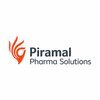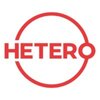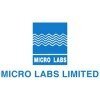QA Executive
100+ QA Executive Interview Questions and Answers

Asked in Himalaya Wellness

Q. What are the pass/fail criteria for the Friability test?
The pass or fail criteria in Friability test Apparatus is based on the percentage of friable mass loss.
The pass criteria is typically set at a maximum percentage of friable mass loss, such as 1% or 0.5%.
If the actual percentage of friable mass loss is below the pass criteria, the test is considered a pass.
If the actual percentage of friable mass loss exceeds the pass criteria, the test is considered a fail.
The friability test apparatus measures the ability of tablets or granu...read more

Asked in Himalaya Wellness

Q. What factors influence the hardness of tablets?
Factors influencing tablet hardness include formulation, compression force, excipients, and manufacturing process.
Formulation: The choice and concentration of active and inactive ingredients affect tablet hardness.
Compression force: The force applied during tablet compression affects its hardness.
Excipients: The use of binders, fillers, and disintegrants can impact tablet hardness.
Manufacturing process: Factors like granulation technique and drying conditions can influence ta...read more
QA Executive Interview Questions and Answers for Freshers

Asked in Diamond Beverages

Q. What is HACCP? What is GMP and GHP? GMP and GHP followed in my previous industry? What is CCP?
HACCP is a systematic approach to food safety, GMP and GHP are quality management systems, CCP is a critical control point.
HACCP stands for Hazard Analysis and Critical Control Points, it is a preventive system to identify and control food safety hazards.
GMP stands for Good Manufacturing Practices, it ensures that products are consistently produced and controlled according to quality standards.
GHP stands for Good Hygiene Practices, it focuses on maintaining cleanliness and hy...read more
Asked in Anthea Pharma

Q. What is the name of the auditor, what observations did the auditor provide, and how did we explain these observations?
The auditor's name was John Smith. He observed discrepancies in the documentation process and lack of adherence to quality standards.
Auditor's name: John Smith
Observations: Discrepancies in documentation process, lack of adherence to quality standards
Explanation: Implemented new documentation protocols, conducted training sessions for staff

Asked in Jabsons Foods

Q. What are the Parameters of Raw Material inward quality checks? What lab tests would you require
Parameters and lab tests for raw material inward quality checks
Parameters for raw material inward quality checks include visual inspection, documentation review, and sampling
Lab tests may include physical tests, chemical tests, and microbiological tests
Physical tests can include measurements of size, weight, and density
Chemical tests can include analysis of composition, purity, and pH levels
Microbiological tests can include testing for microbial contamination and presence of ...read more
Asked in Anthea Pharma

Q. What is the process of reconciliation in a Batch Manufacturing Record (BMR), and how is it calculated?
Reconciliation in BMR is the process of comparing the actual quantities of materials used in production with the expected quantities.
Reconciliation involves comparing the actual quantities of raw materials, intermediates, and finished products used in production with the quantities specified in the BMR.
Discrepancies between actual and expected quantities are investigated to determine the cause and ensure product quality.
Reconciliation calculations are typically done by compar...read more
QA Executive Jobs



Asked in Gem Aromatics Limited

Q. Can you explain the difference between quality control and quality assurance?
Quality control focuses on identifying defects in the final product, while quality assurance focuses on preventing defects from occurring in the first place.
Quality control involves inspecting and testing the final product to identify defects and ensure they meet quality standards.
Quality assurance involves implementing processes and procedures to prevent defects from occurring in the first place.
Quality control is reactive, while quality assurance is proactive.
Examples of qu...read more

Asked in Sterling Tools

Q. How to handle the customer complaint and final inspection,CCM, Fasteners standards
Handling customer complaints and final inspection for CCM and Fasteners standards
Listen to the customer's complaint and empathize with their situation
Investigate the issue thoroughly and identify the root cause
Provide a timely and satisfactory resolution to the customer
Ensure that the final inspection meets the CCM and Fasteners standards
Implement corrective actions to prevent similar issues from occurring in the future
Share interview questions and help millions of jobseekers 🌟


Asked in Zf Rane Automotive

Q. How to handle problem, SPC , msa, iatf , GD&T, Inspection instruments etc.
Handling problem, SPC, MSA, IATF, GD&T, Inspection instruments requires a systematic approach.
Understand the problem and its root cause
Use statistical process control (SPC) to monitor and control the process
Conduct measurement system analysis (MSA) to ensure accuracy of inspection instruments
Adhere to International Automotive Task Force (IATF) standards for quality management
Use Geometric Dimensioning and Tolerancing (GD&T) to ensure proper design and manufacturing
Regularly c...read more

Asked in MSN Laboratories

Q. What is physical properties of analytical Chemistry
Physical properties in analytical chemistry refer to characteristics of substances that can be observed or measured without changing their composition.
Physical properties include color, odor, density, melting point, boiling point, solubility, and conductivity.
These properties help in identifying and characterizing substances in analytical chemistry.
For example, the melting point of a compound can be used to confirm its identity by comparing it to known values.
Another example ...read more

Asked in Aurobindo Pharma

Q. Media fill validation and environmental monitoring in filling area, Role of QA change controls and deviations, past job responsibilities
QA executive plays a crucial role in media fill validation, environmental monitoring, change controls, and deviations.
Media fill validation ensures that the filling process is free from contamination.
Environmental monitoring helps to identify potential sources of contamination.
QA change controls ensure that any changes made to the process are properly documented and reviewed.
QA deviations help to identify and address any issues that arise during the filling process.
Past job r...read more

Asked in Piramal Pharma

Q. Which guidelines are followed for process validation?
Guidelines for process validation include establishing process parameters, conducting process performance qualification, and ongoing monitoring.
Establish process parameters
Conduct process performance qualification
Ongoing monitoring
Document all validation activities
Ensure compliance with regulatory requirements
Consider risk management principles
Involve relevant stakeholders

Asked in Hindustan Colas

Q. What is Bitumen, bitumen emulsion, amines, viscosity, softening point
Bitumen is a viscous, black, and sticky material used in road construction. Bitumen emulsion is a mixture of bitumen and water.
Bitumen is a petroleum product used as a binder in road construction
Bitumen emulsion is a mixture of bitumen and water used for surface treatments
Amines are organic compounds used as emulsifiers in bitumen emulsions
Viscosity is the measure of a fluid's resistance to flow
Softening point is the temperature at which bitumen becomes soft and pliable

Asked in Parekh Integrated Services

Q. What are Corrective Action and Preventive Action? Please provide examples.
Corrective Action and Preventive Action are two types of actions taken to address and prevent issues in a process or system.
Corrective Action is taken to address an existing issue or problem in a process or system.
Preventive Action is taken to prevent potential issues or problems from occurring in a process or system.
Examples of Corrective Action include investigating the root cause of a defect and implementing a solution to prevent it from happening again.
Examples of Prevent...read more
Asked in Gem Aromatics Limited

Q. Can you explain the importance of traceability in food safety?
Traceability in food safety is crucial for identifying and addressing issues in the food supply chain.
Traceability helps in quickly identifying the source of contamination in case of a foodborne illness outbreak.
It allows for targeted recalls of specific products, reducing the impact on consumers and the brand.
Traceability ensures compliance with food safety regulations and standards.
It helps in building consumer trust by providing transparency in the food supply chain.
Exampl...read more
Asked in Gem Aromatics Limited

Q. What experience do you have with HACCP implementation?
I have 5 years of experience implementing HACCP in food manufacturing industry.
Led HACCP team in developing and implementing HACCP plans
Conducted hazard analysis and identified critical control points
Established monitoring procedures and corrective actions
Trained staff on HACCP principles and procedures
Successfully passed HACCP audits and maintained compliance
Asked in Gem Aromatics Limited

Q. What is your understanding of GMP in the food industry?
GMP in the food industry refers to Good Manufacturing Practices, which are guidelines and regulations set to ensure the safety and quality of food products.
GMP includes practices such as proper sanitation, employee training, equipment maintenance, and record-keeping to prevent contamination and ensure product consistency.
Examples of GMP in the food industry include regular cleaning of equipment, monitoring of temperature and humidity levels, and strict adherence to recipe for...read more

Asked in Steril Gene Life Sciences

Q. What in-process tests are performed on oral solid dosage forms?
In the process of manufacturing oral solids, various steps are carried out to ensure quality and efficacy.
Raw material testing and selection
Granulation or blending of active ingredients and excipients
Compression or encapsulation of the mixture into tablets or capsules
Coating of tablets for protection and ease of swallowing
Packaging and labeling of the final product
Quality control testing at different stages
Documentation and record-keeping

Asked in Cohance Lifesciences

Q. What is the main element in a Quality Management System (QMS)?
The main element in a QMS is a systematic approach to managing quality through processes, policies, and continuous improvement.
Customer focus: Understanding and meeting customer needs, e.g., conducting surveys to gather feedback.
Leadership: Establishing a clear vision and direction for quality, e.g., top management commitment to quality initiatives.
Engagement of people: Involving employees at all levels in quality processes, e.g., training programs to enhance skills.
Process a...read more

Asked in Jubilant Biosys

Q. What is the process of Quality Management System (QMS)?
QMS is a systematic approach to managing quality throughout an organization's processes.
Establishing quality objectives and policies
Implementing quality control measures
Conducting regular audits and reviews
Continuous improvement through corrective and preventive actions
Asked in Anthea Pharma

Q. Can you describe the audits you have encountered?
I have encountered various audits including internal audits, supplier audits, and regulatory audits.
Internal audits to ensure compliance with company policies and procedures
Supplier audits to assess the quality of products or services provided by vendors
Regulatory audits to verify compliance with industry regulations and standards

Asked in Acme Generics LLP

Q. What is 21 CFR part 11 ? What is data integrity and ALCOA? What is cleaning validation? How to handle deviation? What is CAPA ? tell me about investigation tools of incidents?
21 CFR part 11 is a regulation by the FDA for electronic records and signatures. Data integrity refers to the accuracy and consistency of data. ALCOA stands for Attributable, Legible, Contemporaneous, Original, and Accurate. Cleaning validation is the process of ensuring that cleaning procedures effectively remove residues. Handling deviations involves documenting, investigating, and resolving any deviations from standard procedures. CAPA stands for Corrective and Preventive ...read more
Asked in Shama Food Industries

Q. What is HACCP. What is difference between QA and QC
HACCP is a systematic approach to food safety, while QA focuses on preventing issues and QC focuses on identifying and fixing issues.
HACCP stands for Hazard Analysis and Critical Control Points, a systematic approach to food safety
QA (Quality Assurance) focuses on preventing issues through processes and procedures
QC (Quality Control) focuses on identifying and fixing issues through testing and inspections
QA is proactive, while QC is reactive
Example: QA would involve setting u...read more

Asked in CorroHealth infotech

Q. What is the role of a Quality Assurance (QA) professional?
QA professionals ensure products meet quality standards through testing, process improvement, and compliance with regulations.
Develop and implement testing plans to identify defects before product release.
Conduct manual and automated testing to ensure functionality and performance.
Collaborate with development teams to understand requirements and provide feedback.
Monitor and analyze quality metrics to drive continuous improvement.
Ensure compliance with industry standards and r...read more
Asked in Eon Meditech

Q. Like what is direct inoculation and membrabe filtration technique
Direct inoculation and membrane filtration are microbiological techniques used for detecting and quantifying microorganisms in a sample.
Direct inoculation involves adding a sample to a growth medium and incubating it to allow any microorganisms present to grow and form colonies.
Membrane filtration involves filtering a sample through a membrane with a pore size small enough to trap microorganisms, which are then transferred to a growth medium and incubated.
Both techniques are ...read more

Asked in Metrochem Api

Q. What is validation, and what are the different types of validation?
Validation is the process of ensuring that a system or product meets the specified requirements and standards.
Types of validation include: functional validation, performance validation, security validation, usability validation, and compliance validation.
Functional validation ensures that the system or product meets the functional requirements.
Performance validation ensures that the system or product meets the performance requirements.
Security validation ensures that the syst...read more

Asked in Logo Infosoft

Q. In Selenium, how do you handle popups and alerts?
In Selenium, popups and alerts can be handled using the Alert interface and switchTo() method.
Use Alert interface to handle popups and alerts
Switch to the alert using driver.switchTo().alert()
Perform actions like accept(), dismiss(), getText() on the alert

Asked in SAVA Healthcare

Q. What is the recommended sampling quantity for process validation according to guidelines?
Sampling quantity in process validation refers to the number of units or batches selected for testing to ensure the process is consistently producing quality products.
Sampling quantity should be representative of the entire production process.
It should be sufficient to provide statistically significant results.
Guidelines typically recommend a minimum number of samples to be taken.
For example, FDA guidelines may recommend sampling at least 3 batches for process validation.

Asked in BDR Pharmaceuticals International

Q. What is the process of conducting a quality risk assessment?
Quality risk assessment identifies, evaluates, and mitigates risks to ensure product quality and compliance.
Identify potential risks: Analyze processes to find areas where quality may be compromised, such as equipment failure or human error.
Evaluate risks: Assess the likelihood and impact of identified risks using qualitative or quantitative methods, like FMEA (Failure Mode and Effects Analysis).
Prioritize risks: Rank risks based on their severity and probability to focus on ...read more

Asked in Laurus Labs

Q. What is a site master file, and what guidelines should be followed?
Site Master File is a document containing detailed information about the manufacturing site and its operations.
Site Master File is a comprehensive document that provides detailed information about the manufacturing site, including its facilities, equipment, personnel, and quality management systems.
It serves as a reference document for regulatory authorities to assess the site's compliance with Good Manufacturing Practices (GMP).
Guidelines for creating a Site Master File incl...read more
Interview Questions of Similar Designations
Interview Experiences of Popular Companies








Reviews
Interviews
Salaries
Users

















